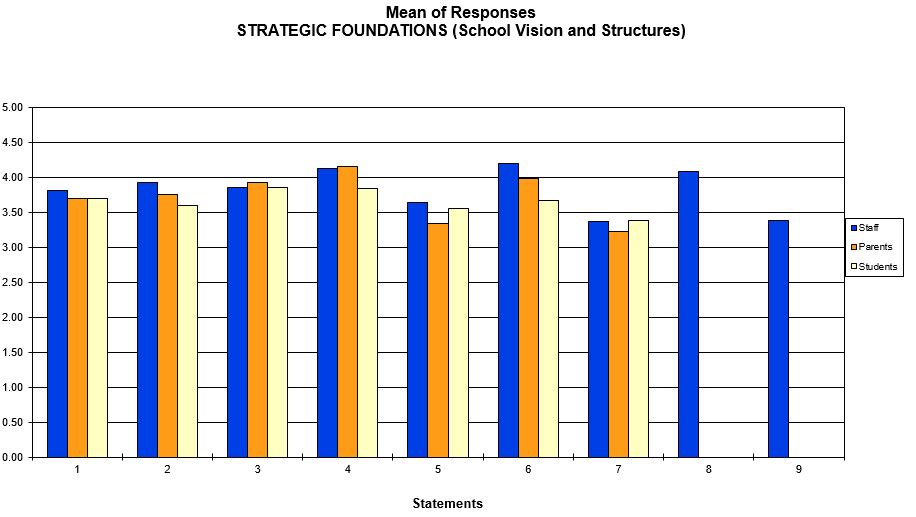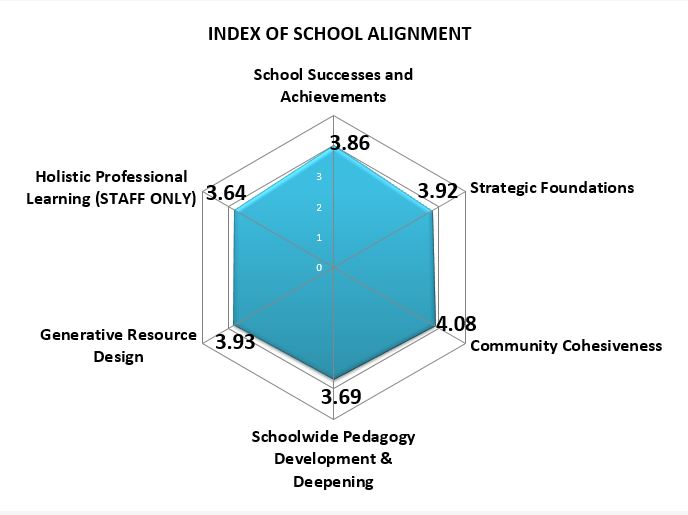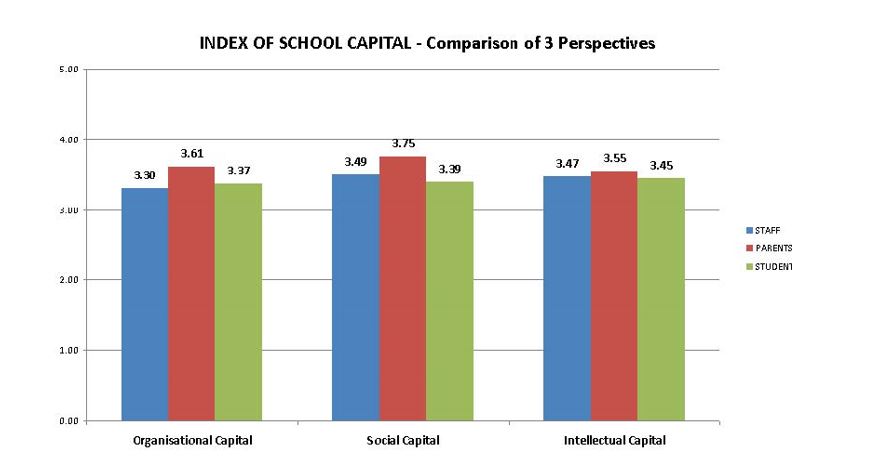ABOUT
The DISA is an online diagnostic survey tool, developed by the Leadership Research International (LRI) team at the University of Southern Queensland (USQ), that examines your school’s overall alignment and provides baseline data and gap analysis for the purpose of planning your school improvement agenda. DISA is comprised of three surveys customised specifically for staff, parents and students.
School improvement is a whole-school effort. Success is informed by a cohesive and clearly articulated direction that is identified by the school community, particularly the students, staff and parents/carers. DISA provides schools with the means to identify their perceived strengths as well as areas requiring work and gaps that need attention.
ACEL and the University of Southern Queensland have an agreement of collaboration for the purpose of disseminating resources, such as DISA, to help schools build capacity and implement change.
Features of DISA
- Three months of access to the survey
- Unlimited participants can complete survey simultaneously
- Feedback can be given in an anonymous format
- Professional results analysis by qualified researchers
- Opportunity for further surveys to compare data.
Benefits of using DISA
- Insight into your school’s current performance
- Data to inform your school’s strategic planning
- A comprehensive report supplied with graphical representations of findings produced
- Student year-level as well as whole-school response available
- Teaching and non-teaching staff responses available
- A follow-up discussion of the results with USQ-LRI staff.
Purchase DISA
To purchase DISA, see the member and non-member rates here
HOW IT WORKS
The DISA has been designed to provide schools with three levels of information: comparative feedback; a School Alignment Index, which provides information on the overall level of organisational alignment or coherence; and a School Capital Index that scores a school’s level of social, intellectual and organisational capital.
1. Comparative feedback
Staff, parents and students provide individual perspective on the “elements” of the Research-Based Framework for Organisational Alignment (RBF), namely:
- School successes and achievements
- Strategic foundations
- Community cohesiveness
- Pedagogical development and deepening
- Generative resource design
- Holistic professional learning.
The quantitative analysis by the Leadership Research International team at the University of Southern Queensland provides summary means and standard deviations for each of the inventory items and the contributory elements as a whole – for staff, parents, students, and overall (see Figures 1 and 2 below).

Figure 1: Example of report statement mean and standard deviation

Figure 2: Example of a statement of means graph

Figure 3: Research-based framework for enhancing organisational coherence
2. Index of School Alignment
The creation of meaningful and deliberate alignments between school vision, community input, classroom practices, physical infrastructure and professional learning serve to create dynamic educational environments. Based on an analysis of authoritative contributions from educational organisational research, the following definition of alignment has been developed to guide schools:
Alignment in schools occurs when each of the contributory elements of the school (school vision, community input, pedagogical practices, resourcing, and professional learning) is developed comprehensively; when the five elements are philosophically congruous; and when they are implemented to be mutually re-enforcing in the school’s practices. (Andrews & Conway, 2018, p. 14)
Our research tells us that schools that are characterised by high levels of alignment, of their contributory elements, will be better placed to achieve outcomes that reflect their aspirational goals. That is, high levels of student achievement, teacher sense of professional wellbeing, community support and embedded processes for sustaining success.
The Index of School Alignment (Figure 4) depicts the developmental depth of each of the six elements of the RBF, using a scale of 1-5, as well as their relation to one another. The items in each of the elements are drawn from the information in the RBF (refer Figure 3).

Figure 4: Index of School Alignment
3. Index of School Capital
The Index of School Capital has been derived from a combination of several “capital” models relating to school capacity building. These include Hargreaves’s (2001) notion of enhancement of outcomes partially achieved through “leverages”, such as “intellectual capital” (what teachers know and do) and “social capital” (the school’s capacity to generate trust and sustain both internal and external networks). The notion of “organisational capital” is taken from Mitchell and Sackney (2000) as well as Hopkins and Jackson (2003), and its definition has been further defined from our research at USQ (Andrews et al., 2009; Andrews, D., Crowther, F., Morgan, A., & O'Neill, S., 2012). The term has been coined to describe intentional design, those structural organisational arrangements that Harris et al. (2003) assert generate associated synergies, interdependence and efficiencies.
In summary, these school capitals are defined as follows:
- Social Capital
Social capital describes professional relationships of trust and respect, and dynamics within parallel leadership and in student wellbeing. The underpinning concept is that of relationships between colleagues, and the school and its community.
- Intellectual Capital
Intellectual capital describes a combination of the link between school priority areas for improvement, teacher classroom practice, and the articulation of what constitutes successful teaching to enhance student achievement across learning areas.
- Organisational Capital
Organisational capital describes a combination of procedures for shared school planning, including internal and external networks, as well as organisation of time, space, technologies, curriculum design and school aesthetics.
Index of School Capital representation
Each item of the DISA is assigned to one of the three capitals – social, intellectual or organisational and is represented graphically (see example in Figure 5).

Figure 5: Example of an Index of School Capital
References
Andrews, D., Abawi, L., Conway, J., Dawson, M., Lewis, M., O'Neill, S., Petersen, S. & Associates. (2009). A research report on the implementation of the IDEAS Project in Victoria, 2004-2008. Leadership Research International (LRI), USQ: Toowoomba.
Andrews, D., & Conway, J. (2018). IDEAS: The Way to Sustainable School Improvement. Toowoomba, QLD: University of Southern Queensland, Leadership Research International.
Andrews, D., Crowther, F., Morgan, A., & O'Neill, S. (2012). The effectiveness of the IDEAS Project in Sydney CEO – A research report. Leadership Research International (LRI), USQ: Toowoomba.
Hargreaves, D. (2001). A capital theory of school effectiveness and improvement. British Educational Research Journal, 27(4), 487-503.
Harris, A., Day, C., Hadfield, M., Hopkins, D., Hargreaves, A. & Chapman, C. (2003). Effective leadership for school improvement. London: RoutledgeFalmer.
Hopkins, D. & Jackson, D. (2003). Building the capacity for leading and learning. In A. Harris, C. Day, D. Hopkins, M. Hadfield, A. Hargreaves & C. Chapman (Eds.), Effective leadership for school improvement (pp. 84-104). New York: RoutledgeFalmer.
Mitchell, C. & Sackney, L. (2000). Profound improvement: Building capacity for a learning community. Lisse, Netherlands: Swets & Zeitlinger.